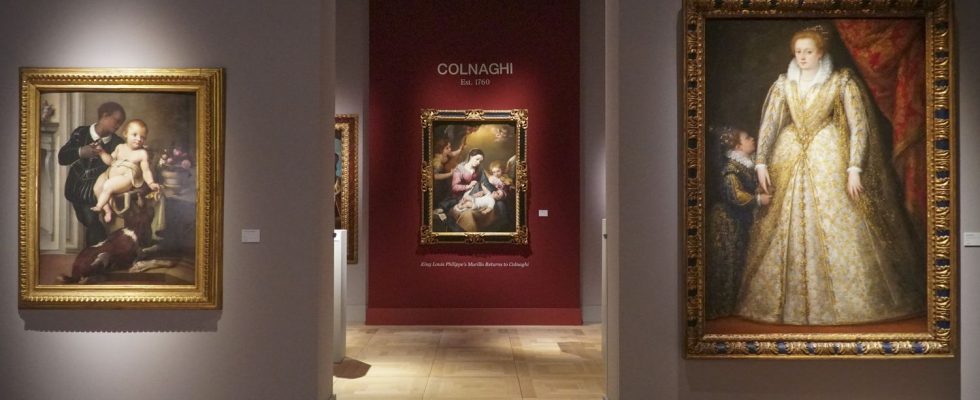Focus on art in Europe today with Christophe de Quénetain, art expert, historian and antique dealer, on the occasion of the FAF, the International Art Fair in Maastricht, the Netherlands, for its 37th edition from March 9 to 14.
franceinfo: Che major meeting with 270 gallery owners from 22 countries is an opportunity for us to discuss artistic trends. If we choose a few: neo-impressionism, pointillism, symbolism, fauvism, art deco, cubism, all in disorder. Is there no more art movement today?
Christophe de Quénetain: Indeed, the notion of “art movement” as such, that is to say a movement in which theoreticians, artists, major clients, major dealers are brought together, does not exist in ‘Current state. That doesn’t prevent there from being a very great artistic creation, which creates emotions in the viewer, but indeed, the notion of great artistic movements, the last in France, was that of the New Realists for me…
But today, the 21st century?
The 21st century is a succession of individualities. But in the history of art, it has always been that, it has always been a succession of artists who were part of great movements and also successions of individualities. Niki de Saint Phalle for example with Tinguely, with all the new realists, Klein blue. It’s all around the same time. It’s the 60s…
Which went hand in hand with the Beatles…
There was a “swinging” side, people wanted to mix. We must not forget that at the time, we had 5% growth. You could have a painter who was the best friend of a great filmmaker, who himself was the great friend of Pierre Restany, who had theorized New Realism. But it is true that in the current state, we cannot say that there have been major movements that unite artists in different fields.
Is this the bottom of the wave?
I think. But who says hollow, says vague…
We talk about individualism, but isn’t it today the fact that an emerging artist is taken by the luxury industry? He has orders and they don’t have time to meet…
Indeed, they are totally monopolized by this luxury industry which is very demanding, which is an industry which demands economic results. It becomes, for some, a form of business, and that’s why we find them on handbags, on shop windows, is that the primary goal, the finality of an artist? Not for me…
There is no longer the exchange of artists who met with writers, filmmakers, even politicians at the beginning of the other century, I am thinking of Clémenceau. Do we no longer exchange, do we no longer share?
It is certain that there are fewer and fewer politicians like Malraux and Michel Guy who live with their artists and who love their artists. It disappears little by little, and I have the impression that we become a product. Unfortunately, we all become products, but what we expect from artists, in fact, is to wake us up, and that we are not all manufactured things.
TEFAF, for example, is 7,000 years of art history, it is the exceptional place, once a year in the world, where artists, experts, curators, collectors will meet. When we look for these new trends somewhere, won’t they emerge on the occasion of these major meetings?
Indeed, these major trends were born from meetings and nowadays, the only place where historians, collectors, great artists, museum curators meet, of course, are at fairs and particularly TEFAF.
Every year, I see artists like Jean-Michel Othoniel, or the Belgian sculptor Johan Creten who stay for several days wandering around the galleries, talking. And all these things stimulate artists, art historians and dealers intellectually.
Because we wander…
Because we wander, on is far from luxury, and then we are surrounded by beauty, we are surrounded by things that surprise you, so it necessarily has an influence on the future of all the people who are part of this adventure.
And here, I ask the opinion of the expert Christophe de Quénetain, what movement do you like?
So I like modernity. This is what modernity seeks through the ages, whatever they may be. So I can love from the 17th to the 19th century, all types of pieces, on all types of supports. And for example, this year, I am going to pay homage to the great French decorator, Georges Geffroy, in a stand that we are going to create and we will see that this decorator manages to reinterpret his favorite era, the 18th century.
